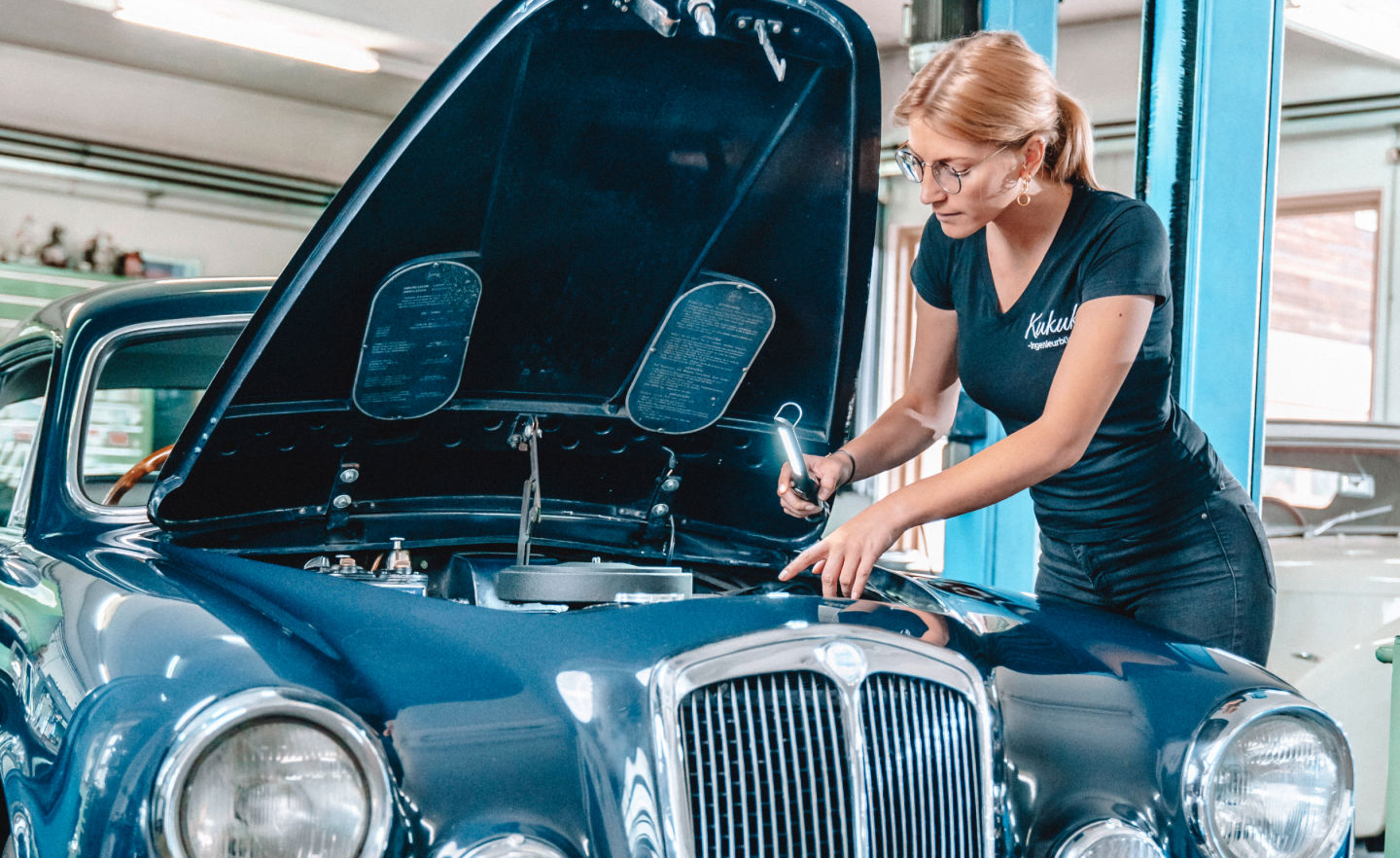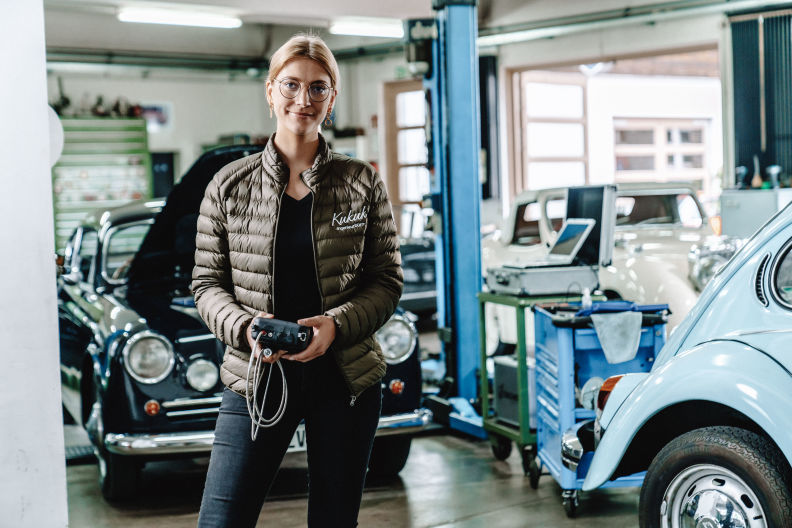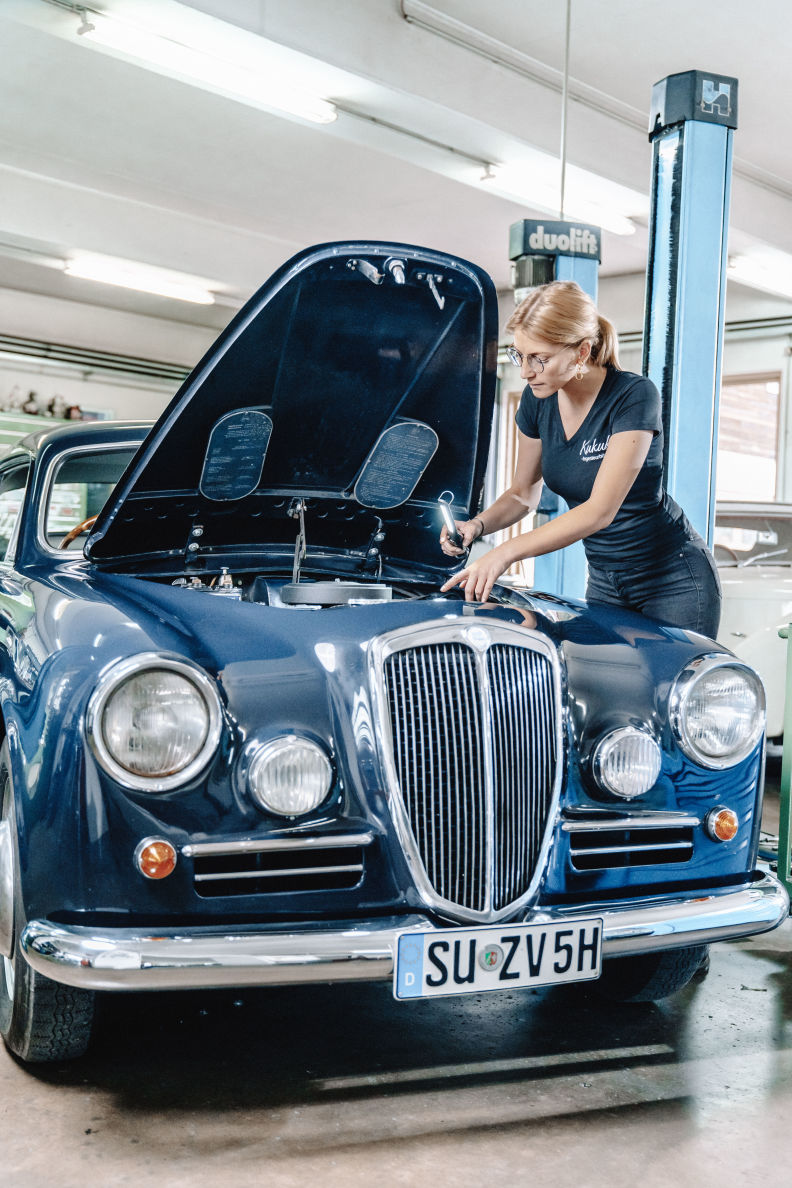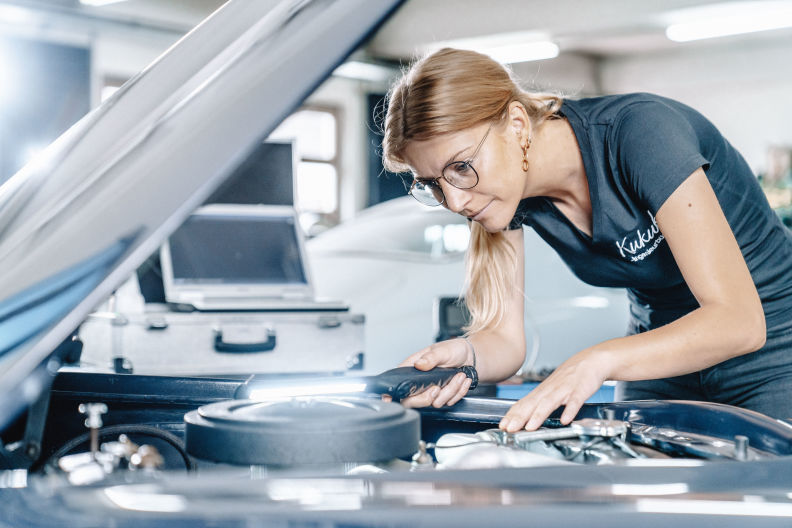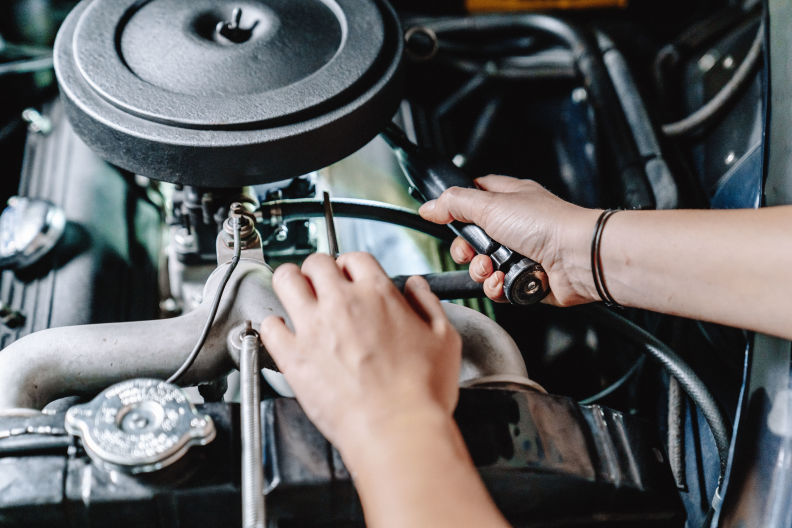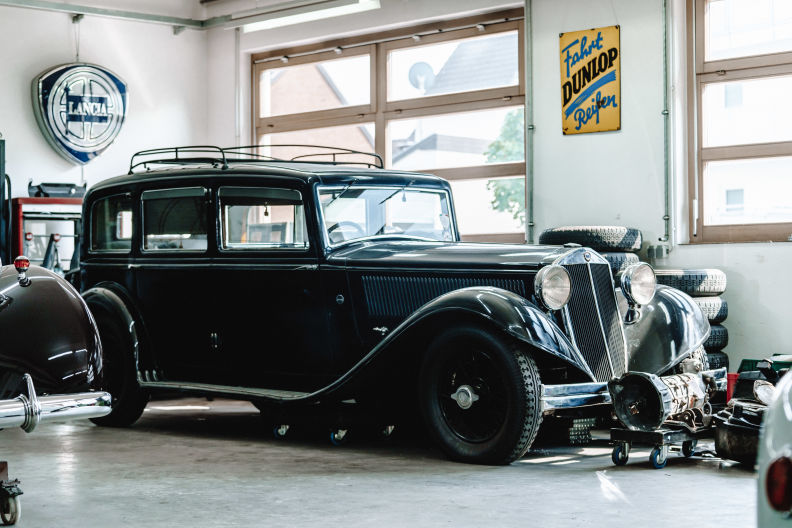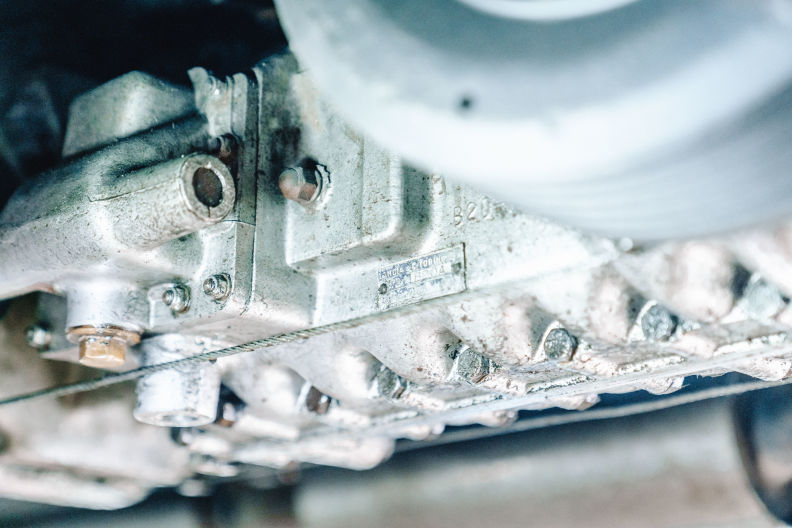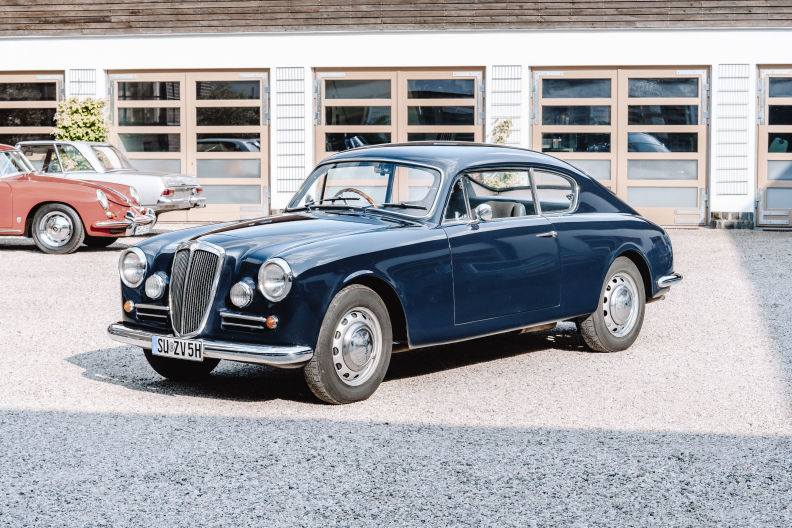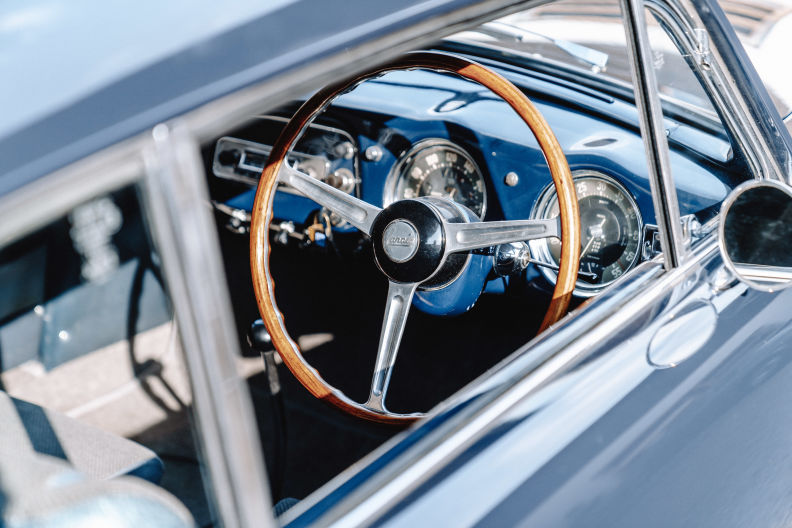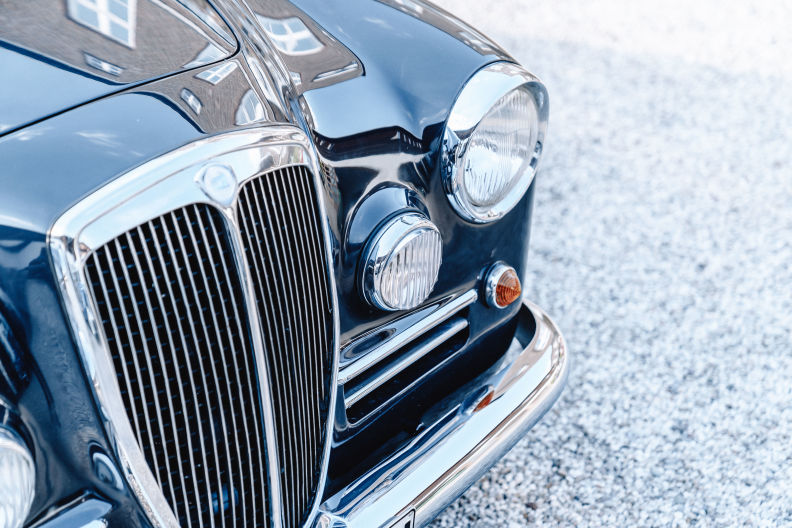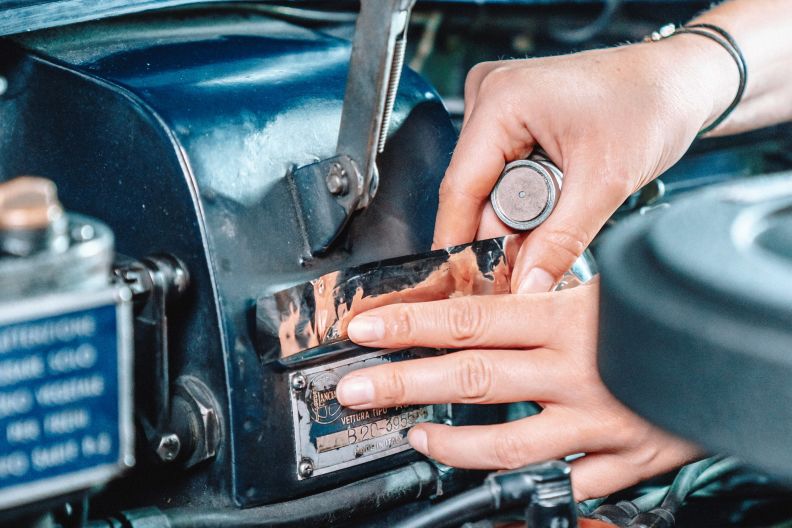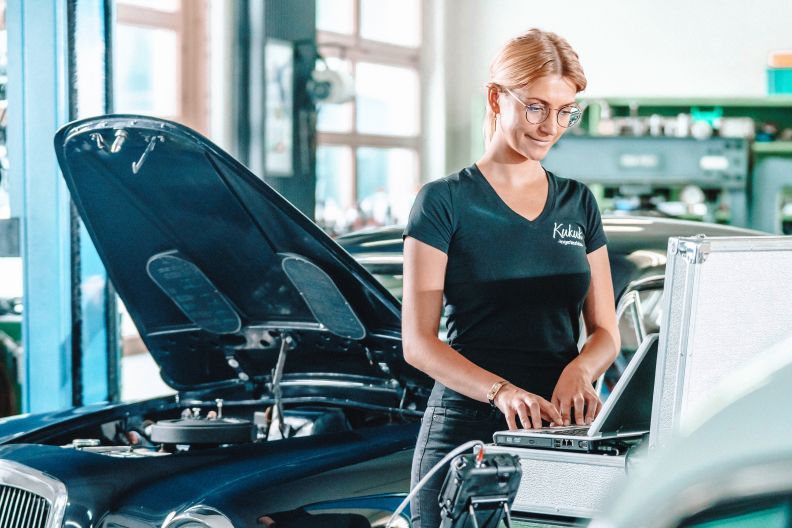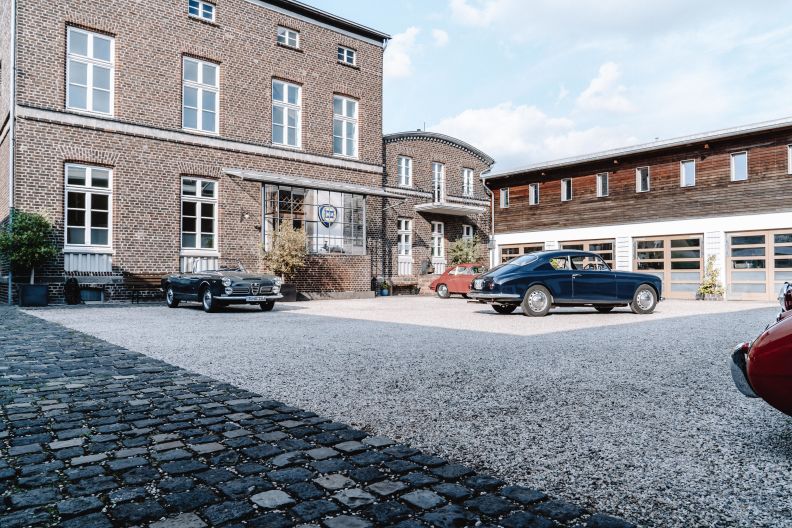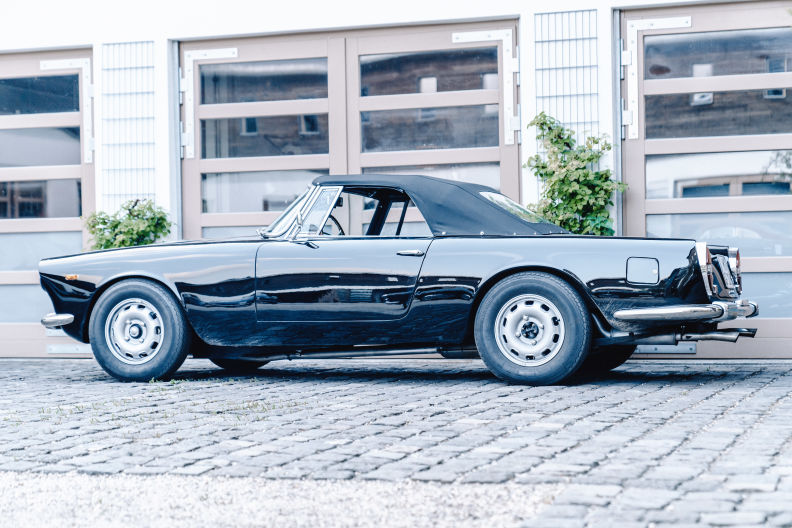Feature
Automotive CSI: Authenticating the world’s most important cars
Photography by Niclas von Glahn
Due diligence is critical in any automotive purchase, whether you’re buying your first car or your 40th. In most cases and for most cars, a thorough pre-purchase inspection and homework will suffice in catching any red flags. But for a certain class of cars where the table stakes are much higher, authentication is required at a much more granular level to truly verify originality.
This is where the name Kukuk appears. The engineering office Kukuk, lead by Klaus and Laura Kukuk, spent decades developing scientific evaluation methods to go where PPIs and CARFAX reports cannot go. Part CSI, part automotive archaeology, Kukuk‘s inspections study a car’s material and components to prepare a hyper-detailed report that can either be the bearer of bad news or a joyous discovery.
We spoke with Laura during her inspection of a Lancia Aurelia to learn more about her craft and walk away with some tips and tricks on how to better evaluate cars ourselves.
Photographed by Niclas von Glahn
Marqued: How would you describe your work? I know you have described it as scientific authentication, so can you tell us about how you got into this, what scientific authentication is, and what's involved in that whole world?
Laura: So scientific authentication is basically an additional approach to the classical historical research. At the end of the day, we're doing a full-on technical inspection of the car, of course additionally to our historical research. We’re all into classic cars and this is what we live for, for the history of the car. But then we go further: we inspect the quality of the car, of the parts that we see upfront. And then we inspect and analyze whether they are original or not.
We're trying to put objective matters into inspecting it, because obviously we all know that the classic car world is a very subjective world, and history can be interpreted in different directions.
I mean, if you measure the paint thickness of a car, it's black and white. There's no room to talk around it. You have a number and you know whether it's a first-paint car or you know whether it's a repaint, or whether there is a lot of filler underneath or something like that.
And it tells you a lot. Even just the body underneath of the panels, whether it is in a good shape or whether there is corrosion on it. Then there are other approaches and other methods we can use which have the same idea, to bring an objective result to that inspection.
The same goes with the condition of something, like the condition of the engine. If I look at an engine, yes I can be an engine expert and I can hear a lot from the engine, and I can feel how the engine is running, and I can smell how the engine is running. But ultimately, I will always need to open the engine in order to see the proper condition.
Photographed by Niclas von Glahn
I need to look at the bearings, I need to look at the crankshaft and camshaft, but there is a way to do it a bit easier. You can just do an oil analysis and send that oil sample into the laboratory, and it tells you a lot. It tells you almost everything.
Marqued: Interesting.
Laura: We try to find methods that simplifying things, that wouldn’t for example require you to take the whole engine apart to have a similar result. We try to be non-invasive and get as much information as possible about the condition, about the quality, about the originality, about everything without damaging the car.
Basically, at the end of the day, you have a full 'doctor's file' on a car. This is what my dad has specialized in since he founded the company in '86. He’s always tried to find new methods and new ways to bring in more information, to get more information about a car.
And, these methods have evolved through technical evolution. 15 years ago, we needed to use acids in order to analyze stampings on a car. For instance, to analyze whether it's a matching number, original car, you would have needed to use acids, when there is a questionable number. We're trying to translate these methods and improve them by making them non-destructive, non-invasive, and always being up-to-date with the technologies as well. We can do this for every brand, every model.
Photographed by Niclas von Glahn
People ask me "You're not specializing in one brand, on one model, so how can you be a specialist in it?" Well, because we're bringing an objective, scientific approach, which you can apply to absolutely every car, every model, every year. It can even be a modern car.
Of course we need to do our research. We need to research that specific car. We need to talk to our network of historians, to the manufacturer, to, for instance, the Porsche Classic archive. We need to talk to all of these people, and we need to talk to specialists who are specializing in that model in order to find these little pieces and the little changes that are relevant for that model. But then that is one part, the other part we can always apply is our scientific approach which is just applicable to absolutely every car.
Marqued: So it’s a little like those crime scene investigation shows: forensic analysis for the classic cars. It seems like it's part detective work and part science.
Laura: Yes, correct. We often do feel a little like an automotive Sherlock Holmes.
Marqued: So describe the customer profile for you— is it someone who wants to buy a car and wants to understand its history before buying it? Or someone who bought something and wants to know more about what they have? What's sort of the mix of use cases you see?
Laura: All of it. All of what you just said, and more. Ideally, our client would be someone who would want to buy the car, so they’re bringing me in at the beginning.
Photographed by Niclas von Glahn
Marqued: Before they commit to a car that may not be as good as they think?
Laura: Well, It could just be the brakes are not in a good condition, it could be an easy thing. But then it could also be that the car isn't necessarily what the car should have been.
At the end of the day our clients are everyone: we have museums, collectors with big collections who just want a value on the car for insurance reasons. Then there are people who are doubting the originality of their car, or they've been told a story about their car that might not be correct and they want to validate that. There are people who want to sell the car but aren't sure what price to put on it.
Then there are differences, it's not just the markets. Of course, the rarer the car, the less of a market there is, and you need to put a lot of research into it to put a proper price tag on it. And it's not just the market value, we'll also analyze the value of the car itself, so there are differences of values.
A market value is of course always the value that the market would be willing to pay for the car, but at the same time, the car could be worth a lot more because you may have changed a lot on the car and you put a lot of money into it. So the value of the materials is more than the market would be willing to pay for.
Photographed by Niclas von Glahn
Marqued: Is that part of your report? Are you commenting purely on the car's condition and kind of state, or are you also giving a numerical value to the car’s worth?
Laura: Yes, we often value the cars we get to inspect too, depending on what the client is asking for. If they want a market analysis as well, they get a market analysis, which is often the case
But first you need to rate the condition of a car, ideally using a grading system. If you have a grade, then you need to analyze the market in these conditions, but then also go further and look at the individual history of that car.
Especially with race cars, it's very difficult. It’s all about the races they've won and the racing drivers who drive them, the tracks they've been driven on, and the accidents they've had or might have had, and it's a lot of research that then obviously is adding to the value or not. For example with the Porsche racing cars, the 910, the 906 and stuff, they weren't built to last. They were built to last one race. They weren't built to last up to today. For example, the steel material isn’t of high quality, because they just wanted to win one race and needed to be as light as possible.
Marqued: Going back to the science of your work, can you speak to some of the technology that goes into one of these assessments?
Laura: We use the normal paint thickness measurer, which is either a magnetic inductor system for steel or it's an eddy current system for aluminum. Measuring paint thickness gives us a lot of information not only about the condition of the paint but also of the body structure underneath. Hidden accidents, corroded steel panels and such can be hidden by any paint shop in the world. Or you want to measure a “first paint car” and it's another surface, for example, if I want a paint thickness measurement of carbon fiber or fiberglass or something, I use ultrasonic.
The results are then compared to the manufacturers production sheet, to the technical drawing. We then go ahead and perform material analysis’ via spectroscopy of each part of the body and frame. Over 35 years we have gained a huge archive of reference vehicles all the way back to 1890, so this allows us to date the material to a specific decade and verify it against the manufacturers composition.
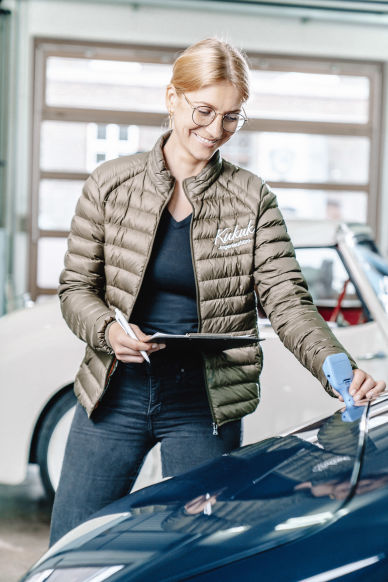

If we move towards the drive for example, we use oil analysis to check the engine, gearbox, and differential and gain full clearance on the condition of such. We use endoscopy, a type of camera, in order to go into the inside of a frame to check for corrosion or go inside the engine cylinders and check for damages. If you want to check the frame or the body for corrosion, you have to look inside of the panels where you're obviously not able to see or feel anything by hand.
Marqued: So, it's almost like you're a doctor.
Laura: Since 1989 we have been in cooperation with a university specializing on steel and aluminum for tricky cases and constantly evolving our standards. These results, in addition with the wall thickness measurement and welding analyzation, allows us to fully authenticate a frame or a body for its originality. It allows us tell you whether that material, whether that frame, is from the '30s or whether it's been made yesterday, which is quite beneficial.
They've been specializing in dating back material, like steel and aluminum, and that's what we can do as well. I can tell you whether that material, whether that frame is from the '30s or whether it's been made yesterday, which is quite beneficial.
Marqued: It's part archeology as well, like what they do with dinosaurs. That's pretty awesome.
Laura: It's very interesting, I'm an engineer, so it's interesting looking at the technical parts and combine that with the historical era, the automotive evolution and the history of the car itself. Being a classic car lover and engineer, it's a perfect combination.
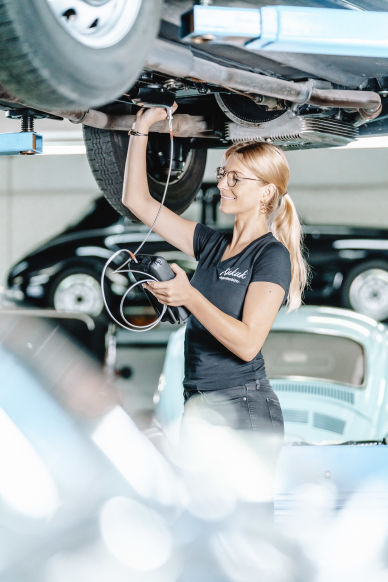
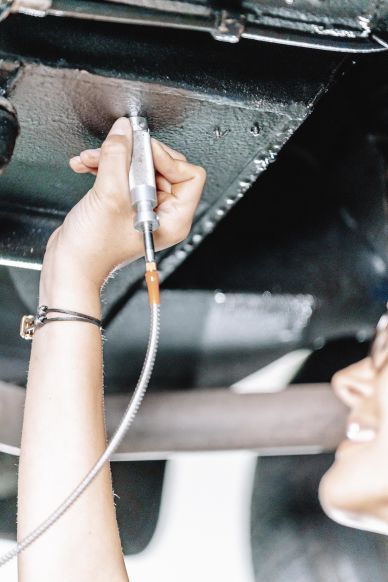
Ah yeah, I forgot, we did not talk about the identity of the car. The stampings on a car, such as the vin number, are giving the car its specific identification. There are many methods we use, and its always the combination of such, but the magnetic optical method we use specifically on stampings. It matters a great deal to analyze such stampings and match them against the delivery information of the manufacturer to check whether they are original or re-stamped.
To check all the numbers, I get the delivery sheet from the manufacturer. On there every number is noted: how the car left the factory, engine number, gearbox number, body number, production number, chassis number, whatever. Everything. And these numbers I will check on the car. Meaning by checking, not just visual, not just looking by eye, because there can always be something underneath.
Especially on Porsche, most of them are stamped in lacquer. So it could have been grinded off again, the number could have been grinded off and another number stamped on top, for example, worst case scenario. You wouldn't see it with your eye.
Marqued: You're going beyond numbers matching. I think, at first glance, even with a car that's new enough where you think you could be certain of authenticity, but to be absolutely sure it's a different level of analysis. There's what's on paper, and there's what someone tells you and then there's what science shows. Each may tell a different story.
Laura: Yes, exactly. That's the essence. It's what science tells you because then there is no talking around it. I may find that the science is matching your story, but it might not. Best for me, and the car of course, if it matches as well, because otherwise it's a wasted discussion
Photographed by Niclas von Glahn
Marqued: Interesting.
Laura: For example, if the material analysis tells me this material is from the '60s, but the car is from the '30s, and absolutely everything else matches the answer from the ‘30s, I would ask why am I getting material analysis from the '60s. So I would then of course doubt myself or doubt the analysis before daring to make a “statement” which would be negative on the car. But of course, I will have to dig deeper to find an answer.
Like we had a car where everything was perfect apart from two tubes on the rear and. Instead of claiming it had them changed, maybe through an accident or such, we instead contacted the manufacturer and the steel company. The result: The steel manufacturer just changed the steel composition. That wasn't noted anywhere, it was basically changed without the car manufacturer's knowledge. And we ended up finding it out.
So we didn't say the car is wrong, because we said "Okay, let's give the car some credit and let's try to find out that maybe there is another reason for it." And I think that's a very important aspect in the classic car world, we should always go a little bit further and beyond in order to always get the right answer.
Because with classic cars, we love them because of their history — and they have lived, they all have lived. Just going quickly around a car and saying "Ah this is all wrong" or "This is perfectly fine," is the wrong approach. The car is worth the time and detailed approach, in our opinion anyway.
Photographed by Niclas von Glahn
Marqued: You and your father built a great business and you are well-respected experts in your field. Do you have any advice to someone who is buying their first enthusiast car?
Laura: You know what, reading the history file and researching the car is very important. I often find out more about the car than I might actually end up finding out about the car in the inspection, or it gives me so much information so I already know what to look for.
Marqued: It sounds like you're advising a very sober approach to buying. Before you get into a car, don't fall in love with it until you've done your homework.
Laura: That is my advice, absolutely. But to be honest, I'm terrible at it with my own cars. My Fiat 600, it's a project car. I didn't buy it as such a project car but it is a proper project car. I didn’t look at it apart from 10 feet away when my heart had already fallen in love and nothing else mattered. I'm rebuilding it now to the greatest standards, it’s a long way just because I totally did not stick to any of my own rules. Of course, at the end of the day, we're all falling in love. No matter whether I'm sitting in a 2.7 RS, or in a Fiat 600, or in a Lancia Fulvia, I'm always smiling.
But I think finding out more about a car and the life of the car — it actually brings out even more passion and more love towards that car.
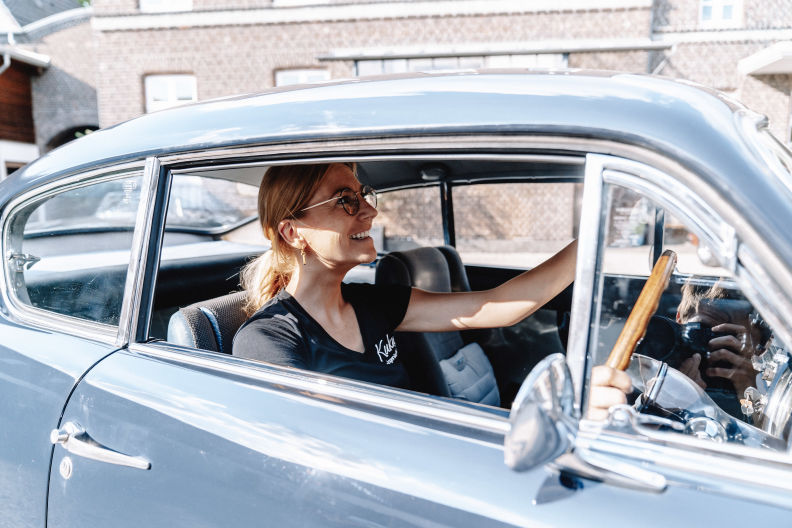
Marqued: It’s wonderful that you can have such a professional approach, but also a private passion for this stuff. And even you can break your own rules because you’re equally a car lover.
Laura: Absolutely. I am a great classic car lover — that’s how I have been brought up. I've never had a modern car. I will never have a modern car. I'm sometimes driving a modern car, for example when I need to carry lots of equipment and it's a very long drive, but even to Italy I'm driving with my W201 Baby Benz.
Marqued: Nice. The passion is there. I think that adds to your credibility in a field that’s driven by passion.
Laura: Passion is our essence, for sure.
More about Laura Kukuk
If you're interested in learning more about Kukuk's work you can visit their website for weekly updates on their projects and follow her on Instagram (@kukuklaura) where she posts tutorials and how-to videos on assessing classic cars.
Meet our contributors
Photographer Niclas von Glahn is based in Germany where he travels shooting for various car magazine.
Comments (...)
What to read next
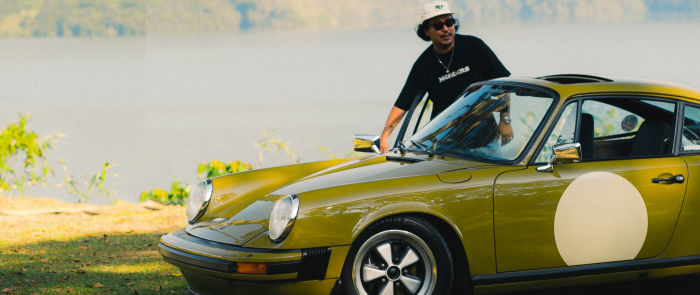
This Malaysian Porsche 911 went from scrapheap to showstopper
0 comments
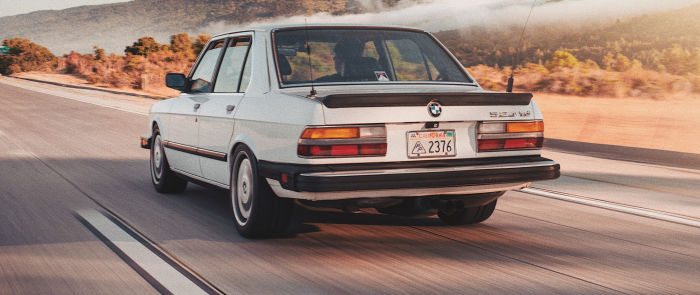
Enthusiast Roundtable: The BMW E28 is a classic driver for the modern world
0 comments
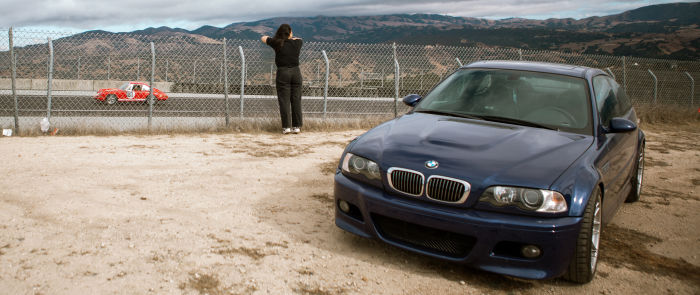
How Rennsport Reunion 7 transcends Porsche as the ultimate enthusiast gathering
2 comments
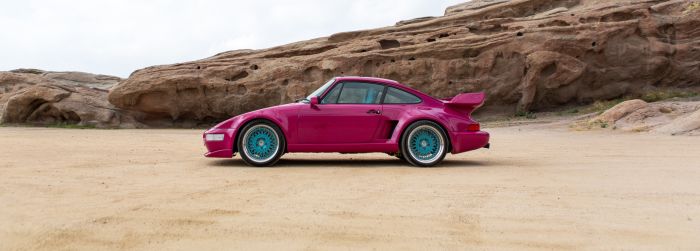
Meet a few of Porsche Classic's finest winners from this year's Restoration Challenge
0 comments
Suggested listings

1980 Triumph
TR8 Convertible 5-Speed
Eldersburg, Maryland 21784
10:39:12
Current bid:
Time remaining:
10:39:12

Sold
1980 Mercedes-Benz
280SL (Euro)
Eldersburg, Maryland 21784

1960 Porsche
356B 1600 Super Coupe
Soulsbyville, California 95372
Before you get started
Please verify your account. You can do so by clicking on the link in the email we sent you.
Can't find your verification email? Click to resend it.
This website uses cookies. We do this to better understand how visitors use our site and to offer you a more personal experience. We share information about your use of our site with social media and analytics partners in accordance with our Privacy Policy. Additional information for California residents

